Bottle tree: description, types and care
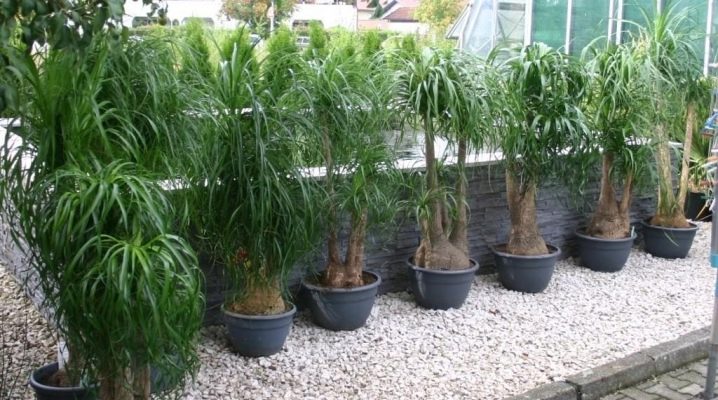
The bottle tree is not often found in our country, but in fact it is a great option for diversifying the interior in an apartment. To make it feel healthy and grow to the required size, it is worth taking good care of it.

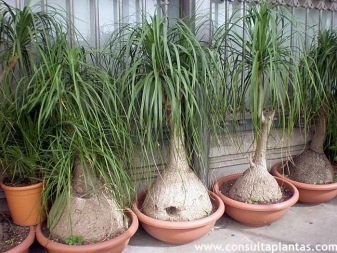
Description
The bottle tree can be not only a houseplant - in hotter countries, it actively reproduces in nature and reaches a great height. It is so named because it has an amazing barrel shape and actually looks like a bottle.
Homeland of origin - Australia. There are an average of 50 types of bottle trees, each with its own characteristics. It grows to a shrub or a full-fledged tree, depending on the care. It is often used as a bonsai.
It is a drought tolerant plant, and water is seldom required. The air temperature can range from 7 to 32 degrees Celsius. It tolerates moisture well, but the soil must be drained so that water does not stagnate in it. A medium with a low alkali content is suitable for planting. For top dressing, a balanced slow-release fertilizer is used in spring, summer and autumn. The flower propagates by seeds or cuttings.

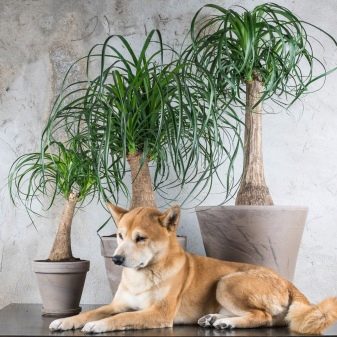
The form can be:
- short-squat;
- gradually thickening;
- with two barrels.

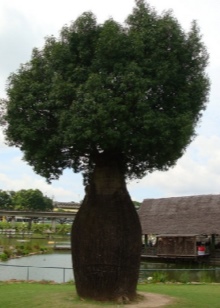
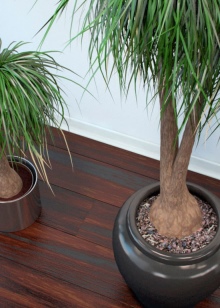
In good conditions, without pruning, the tree quickly reaches 3-5 meters and remains in this state for many years.
In the early years, all the plant's forces are directed towards the formation of the "bottle". Rapid stem growth is observed when planting in a sunny location and with proper care. The bottle tree can grow in most types of soil.
Despite the fact that the plant is accustomed to the heat, it perfectly withstands a drop in air temperature down to -8 C. Cream flowers are formed on mature trees, but flowering is not always repeated every year. The bottle begins to form underground. The trunk can sap in high humidity.
The crown is allowed to be heavily trimmed to form a compact, decorative shape. The plant can be transplanted at any age. These trees have excellent endurance, they even tolerate root pruning.
The bark of the plant is smooth and green on young trees, rough and gray on adults. The crown is always very dense.
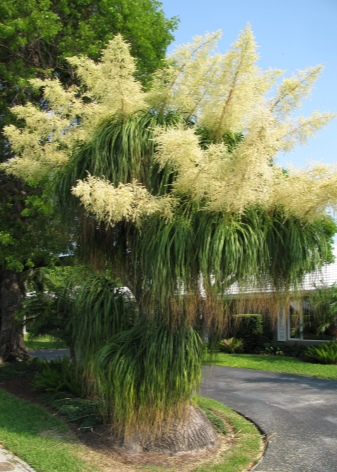
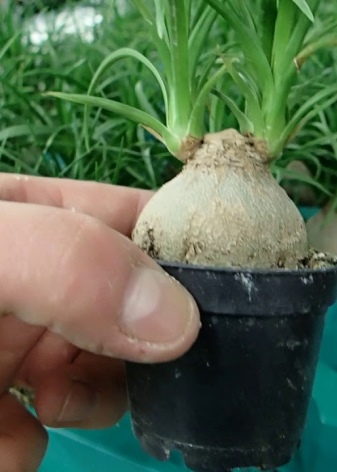
Varieties
Nolina or "tree of happiness" is a tropical plant, which is represented by more than thirty species of rocky, variegated varieties, including I would especially like to highlight the following.
- Bent... This brachychiton can be found more often than others on the shelves of specialty stores. The trunk is distinguished by the presence of an unusual bulbous expansion at the base. There is a special fabric on the lower part, its shade is something between gray and brown, it protects the stem. In a natural environment, such a tree can reach a height of ten meters, in a room - only one and a half. The foliage is narrow, widely used by the Mexicans as a material for weaving baskets.
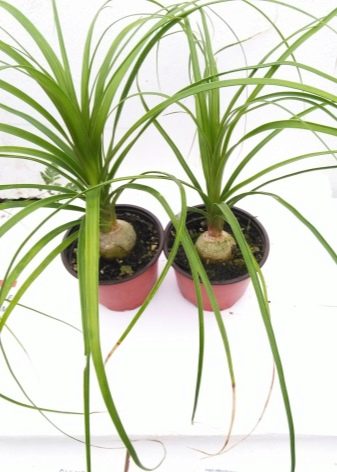
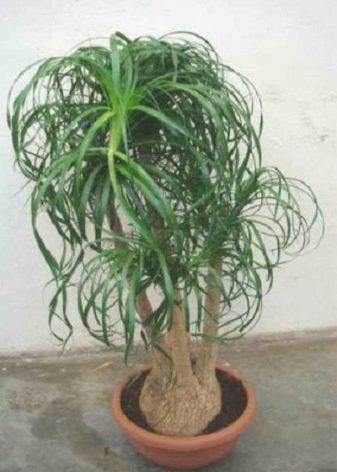
- Long-leaved... It is also called small-fruited bokarnea, it is actively cultivated in the North Caucasus. If it grows in a subtropical climate, it can even bloom in long inflorescences with many small flowers.
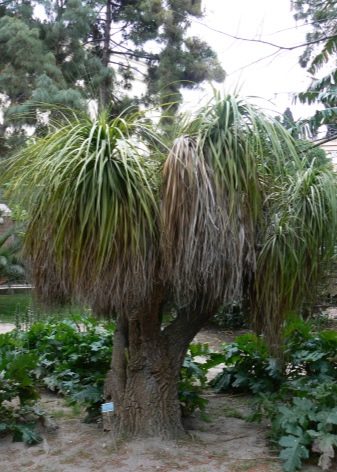
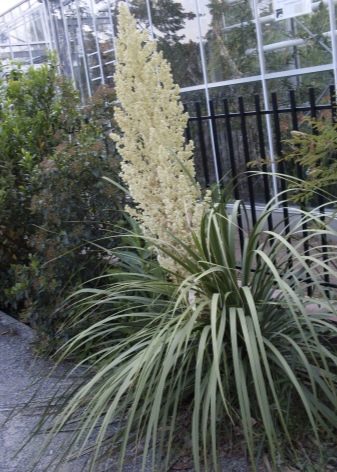
- Compressed... Of the differences that characterize this variety, it is possible to distinguish a small trunk in height and a rigid straight foliage.
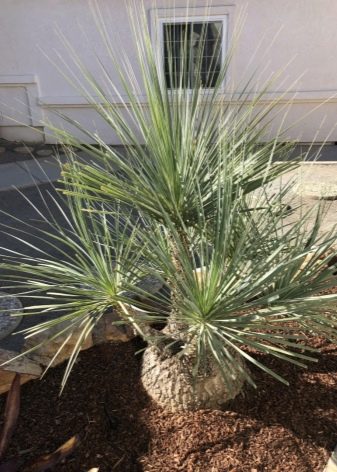
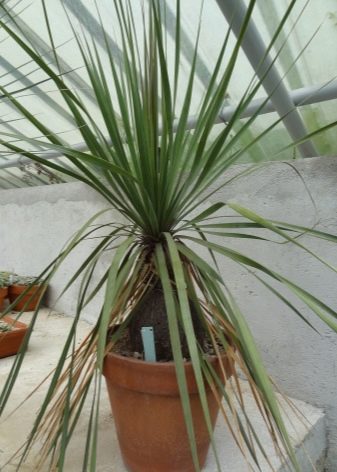
- Nelson... An infrequently presented variety can be seen growing indoors. However, such a tree has an amazing appearance, since the dark, rich, dense green crown has a bluish tint. The plant can grow up to three meters and withstands the cold very well.
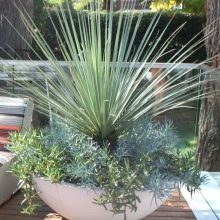
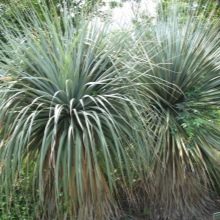
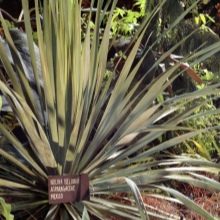
- Lindenmayer... It differs from other varieties in its amazing shape. The trunk can reach the height of a person, at the top the crown is formed from narrow leaves that are very long.
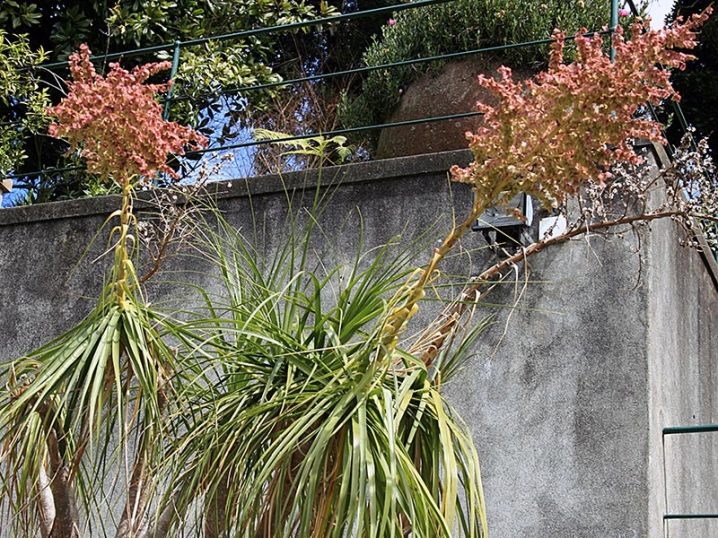
- Microcarpa... Flowers are white-yellow, foliage can reach a meter in length.
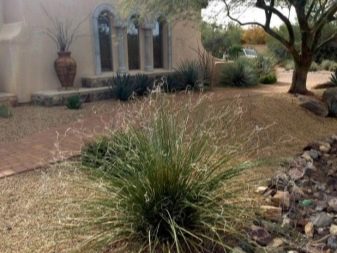
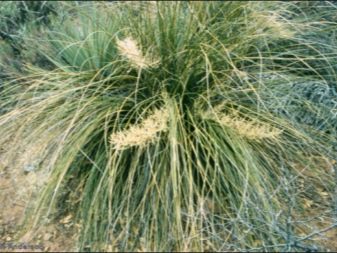
- Maple-leaved variety. Great for bonsai. The tree is evergreen and can grow up to thirty-five meters without pruning.
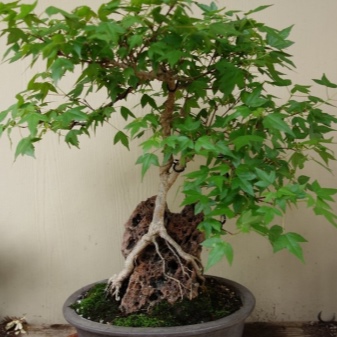
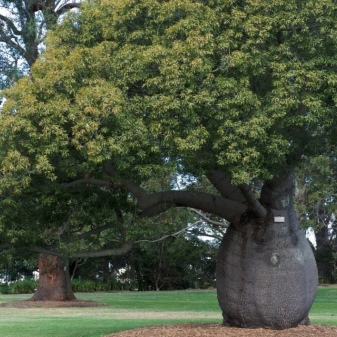
Reproduction methods
If you want to propagate a bottle tree, then planting with seeds or using side shoots is possible.
Growers who manage to get the seeds of this houseplant must first reject those that will not germinate. To do this, they are immersed in warm water for a while - all that surfaced are unsuitable for further use.
After they are immersed for a couple of days in a weak solution of Epin, manganese. Only after that they are laid out in the ground, which is mixed from equal parts of peat and river sand.
It is impossible to take sand from the river bank: it contains many harmful substances, for planting they acquire a special one that has been processed.
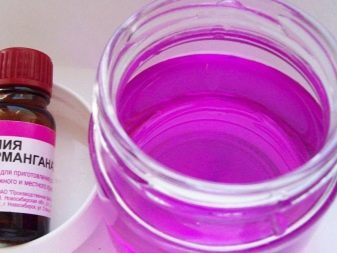
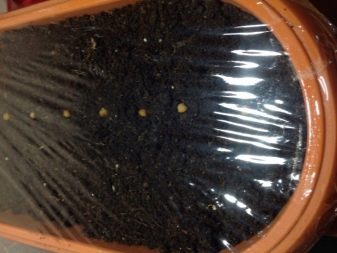
From above, the planting material is covered with a small amount of earth, and the container is installed in a place where there is enough light, artificial lighting can be used. After 35 days, sprouts will appear on the surface; after another couple of days, you can place them in separate containers.
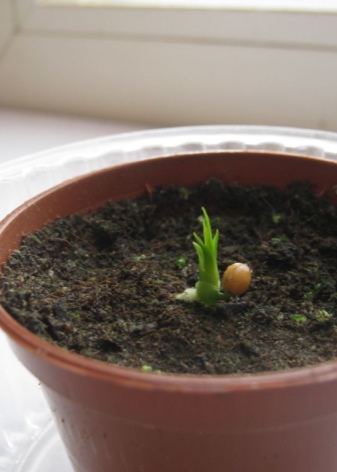

Often shoots appear on the bottle tree, which are also viable. They just need to be separated with a sharp clerical knife, having previously treated it with alcohol, charcoal infusion or manganese. The pot mix should be made up of equal parts vermiculite, sand and peat. The containers are placed in the light, covered with foil.
The air temperature in the room will need to be maintained at + 20-25 C, the processes are sprayed with moisture in a timely manner and ventilated, otherwise they may simply rot. The appearance of new leaves signals the presence of a strong root system; at this stage, the film can be removed.

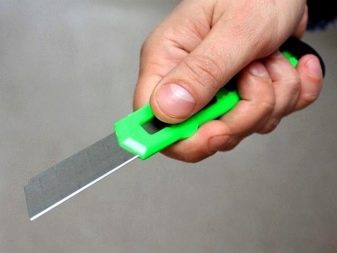
Necessary conditions for growing
The bottle tree grows well outdoors, but the soil should be looser and stay moist, so mulching is often used. Regardless of where the plant is planted, it should have a well-drained soil. You will need to make sure that the pot has a drain hole and high-quality drainage, which is simply organized using gravel or brick chips laid on the bottom. It is not necessary to use expanded clay: according to the latest research in the field of crop production, it leads to a rapid salinization of the soil.
The roots should never be in water for a long time.
Although the bottle tree loves abundant watering, it does not tolerate high humidity, like most other indoor plants, since at high temperatures ideal conditions are created for the growth of bacteria and rot.
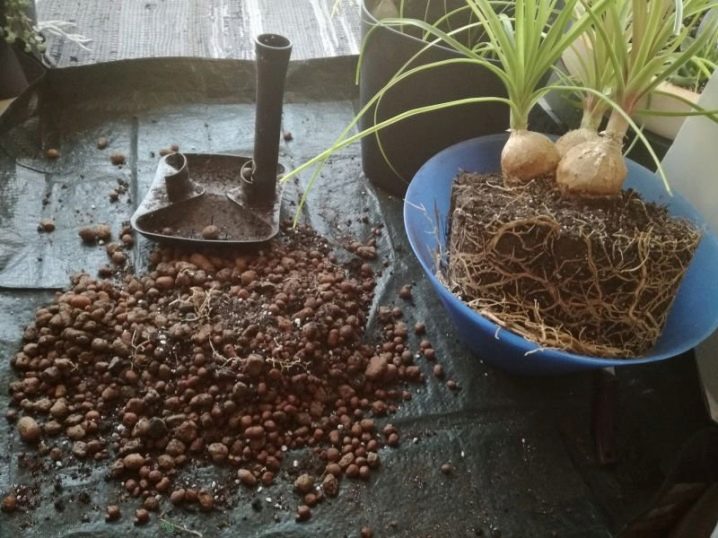
After watering, excess moisture must necessarily drain off completely. Vermiculite and perlite greatly simplify the process. They do not allow water to linger, while retaining the required amount of moisture inside.
Special requirements are imposed on the quality of the irrigation fluid. It is desirable that it was not tap water, but rainwater, well water, melted snow. If it is not possible to get one, then you can use distilled, filtered or settled. Chlorine in the water that we used to drink negatively affects the health of the flower.
The thickening at the bottom of the trunk serves to accumulate moisture, so the bottle tree is drought-resistant. However, for flowering and regular growth, the plant requires watering on a regular basis. It is best to do this early in the morning or late at night. Thus, great benefits can be obtained.
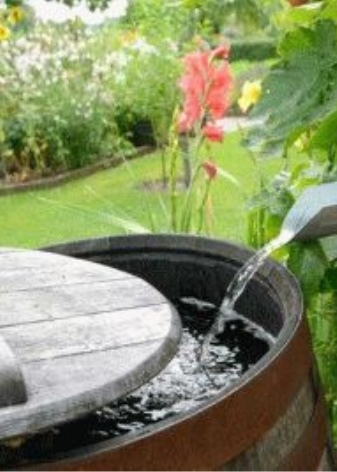
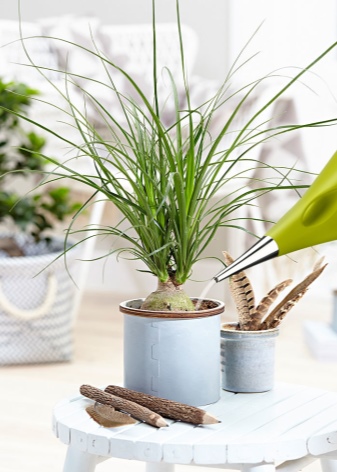
Over time, the plant will need additional feeding, for this it is recommended to use complex fertilizers. However, from them the soil also accumulates salts, so it is necessary to leach the soil using watering with plain water, and not with the addition of top dressing. You can water the ground with distilled water once a month. Mineral or salt build-up is not a problem if the plant is planted outdoors, as rain naturally cleans the soil.
For the bottle tree, you can use a palm fertilizer with minerals. If there is premature yellowing at the tips of the leaves, then the bush is deficient in vitamins and trace elements.
Most of all magnesium is required, then phosphorus, calcium.
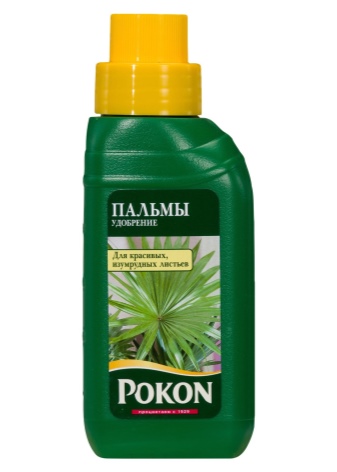
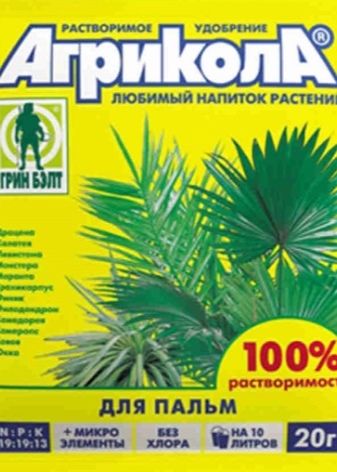
As for the light, it should be present most of the time. When there is not enough of it, the plant reacts sharply with yellowing of foliage, wilting. In this case, you should think about and rearrange the flower to another window or install an additional artificial light lamp. The rays should not be straight - only diffused sunlight is beneficial, so it is better to put the flower not on the window, but near it.
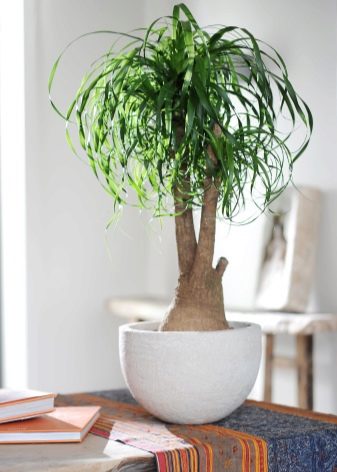
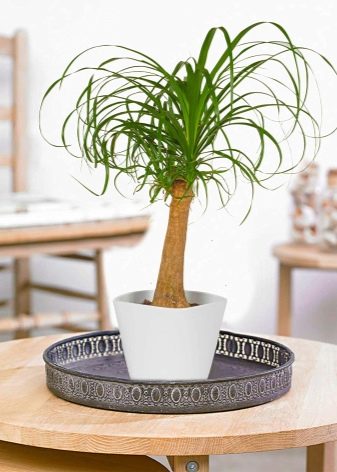
Transfer
A bottle tree transplant is required every year for the first few years as the root system is in a constant growth phase and needs a larger container. Later, you can change the capacity every three or even five years and only because the soil becomes unusable.
Before transplanting, it is worthwhile to carry out a number of preparatory measures, namely, immediately buy a suitable container. Its diameter should be two centimeters larger than the previous one. You cannot take a pot "for growth": the more soil and the smaller the root system, the more moisture remains, respectively, hence the problems with rot due to waterlogged soil.
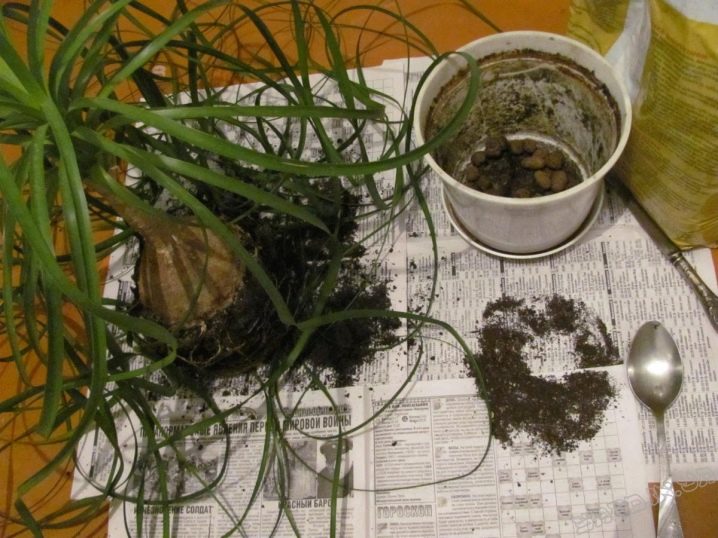
At the second stage, a container with soil is prepared. It is best to mix peat moss, foliage, pine bark, perlite in equal proportions.
It is worth replanting the plant during dormancy, not immediately after purchase. The best time is early spring or late autumn. Before that, it is worth watering it abundantly, a month before that - top dressing. This way the plant will better survive the stress state.
At the time of transplanting, additional pruning of the crown or roots is allowed. Carefully remove the flower from the old container, then shake off the old soil with your hands, and rinse the roots under water. When they are clean, it will be much easier to inspect. Old, damaged or diseased shoots are removed.
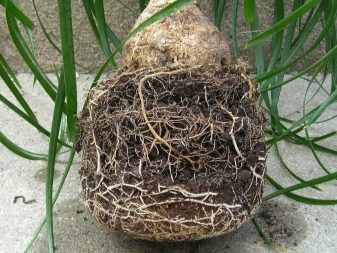

In a new container, a drainage layer is first laid. It can consist of small pebbles, brick chips. Expanded clay is not used, like foam crumbs. The first material contributes to the rapid salting of the soil, the second is poorly permeable to moisture, but at the same time perfectly protects the roots from hypothermia, so you can use foam crumbs, but not in large quantities.
On top of the drainage, soil is poured, then a flower is installed and the rest of the earth is poured. You will need to lightly press down on the soil to remove air pockets and water liberally, but not fertilize. The introduction of the first feeding is possible only after a month, when the plant is sufficiently rooted.
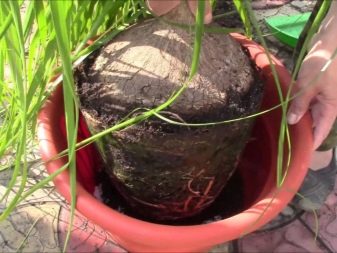

Home care
In order not to revive your indoor flower, it is worth providing it with proper care. Bottle trees love warm climates and grow best in warm areas such as the Mediterranean, South Africa, the US Southwest, and Australia.If the grower lives in a cold climate or an area with extreme weather conditions, grow the flower in a greenhouse or in a temperature-controlled room.
For maintenance, choose a place for a tree in the sun. The soil is desirable fertile and slightly acidic. You can check the pH value using a special test kit. If the indicator is at the level of 6.5-5.5, then it ideally corresponds to the norm.
If the soil is too alkaline, then add fertilizer with peat.
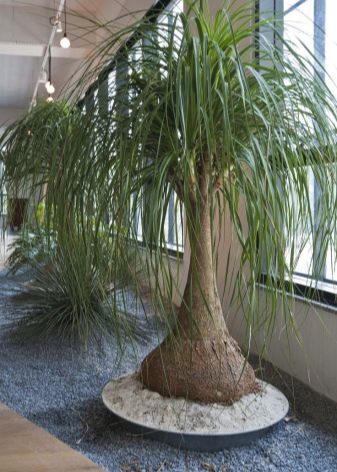
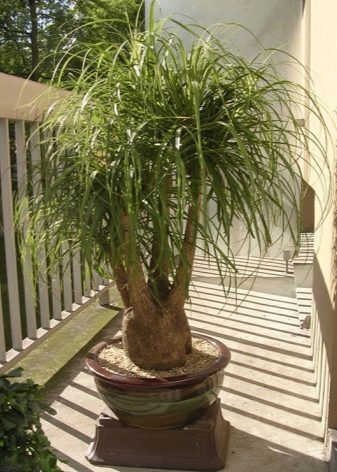
Water the tree vigorously after planting until the soil is very moist but not marshy. Excess moisture from the container should drain off within a few hours, only then can the container be removed to its usual place.
Despite the fact that this houseplant is infrequently susceptible to disease and is affected by insects, this phenomenon still happens. In this case, the grower must know how to recognize and deal with the problem.
If damage appears on the surface of the leaves, the trunk, they should be immediately treated with a solution of activated carbon, since it is through them that most fungal and bacterial infections penetrate inside.

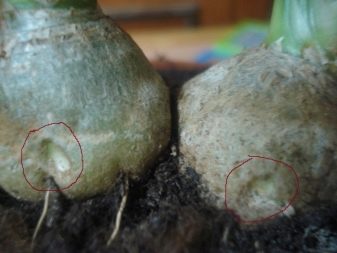
Diseases and pests
It so happens that even with proper care, the leaves dry out, and the change in the appearance of the plant is not always caused by a fungal or bacterial infection. Sometimes the grower himself does not notice how he makes mistakes, taking care of the flower.
Draft and cold can lead to leaf burns, which appear as dry patches at the ends of the leaves that turn brown and die off. Drafts dry out the leaves, causing moisture to evaporate faster. Although most species are drought tolerant and such damage will not kill the plant, it is best to rearrange the plant to keep it attractive and healthy. Damaged shoots are simply cut off, the scissors are wiped with alcohol before pruning and after each cut.
Brown, dry and crumbly leaf edges indicate a lack of moisture. Watering should be regular, but not excessive.
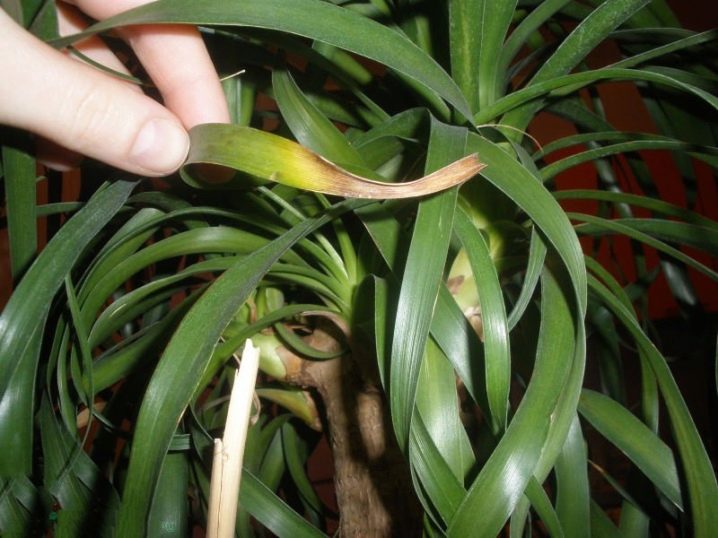
Iron deficiency, called chlorosis, causes the leaves to turn yellow, dry out and die over time, followed by the death of entire branches and stems. Compacted soil and improper watering can cause scarcity. Applying iron chelate to the soil in early spring can help reverse the problem of chlorosis.
Some pests also cause negative changes in foliage. They feed on sap, gather in clusters on stems and leaves. They feed on the sap of the plant, causing the leaves to turn yellow or warp. Whole branches die off over time, and the remaining foliage looks brown, dry and scorched. Among the most common pests, aphids and spider mites can be noted, which are easy to deal with if you use neem oil or a solution with insecticidal soap.
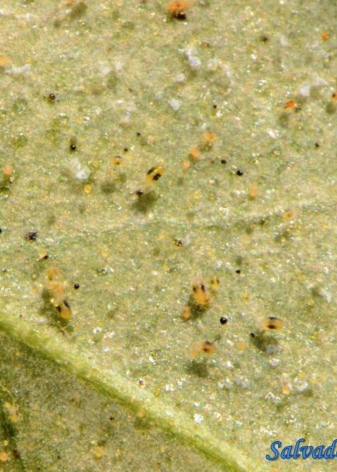
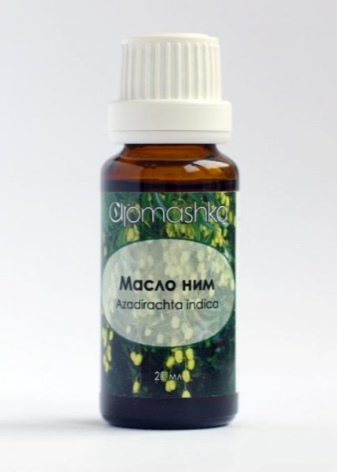
Poor soil conditions and over-watering are the first causes of root rot.
This disease affects the roots, especially those in moist soil. They can no longer absorb oxygen and slowly die. As a result, moisture and nutrients cannot reach the stem and leaves, the plant turns yellow and dies. You will have to fight with a set of measures: replace the pot and soil, cut off damaged roots, treat them with a fungicide.
In general, fungicides help to cope not only with root rot, but also powdery mildew and rust.
If the fungal lesions are curable, then the bacterial ones are practically not amenable to treatment and often the removal of shoots does not lead to the desired result - then the plant must be immediately disposed of before other indoor flowers become infected. High humidity, the use of non-disinfected instruments and the lack of processing of sections are the main reasons for this problem.
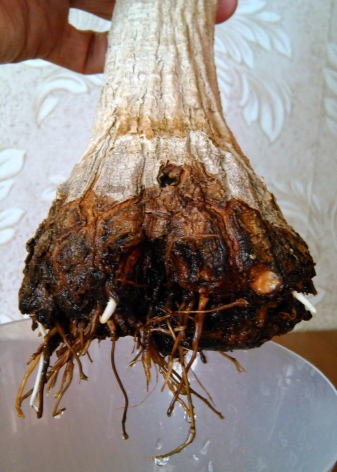
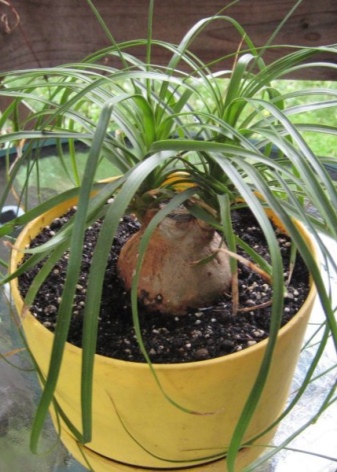
You always need to pay special attention to the state of the foliage: sometimes leaf spots do not threaten with a large infection, but the plant weakens, the normal processes of photosynthesis stop. The plant does not have the necessary strength to fight pathogens, which is why bacteria and fungi so easily penetrate the affected areas. Along with the general deterioration in the health of the bottle tree, more serious diseases are often affected. If you do not react in time, then, most likely, the bottle tree will simply die.
You need to take a very responsible approach to the issue of keeping an indoor flower, because without sufficient light, heat and moisture, you will have to fight fungal infections more often.
For information on how to care for the bottle tree, see the next video.



































































The comment was sent successfully.